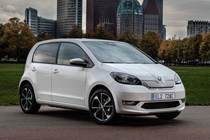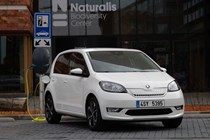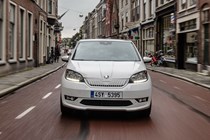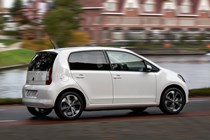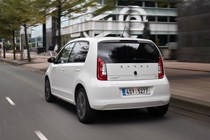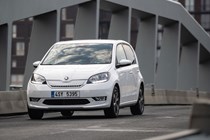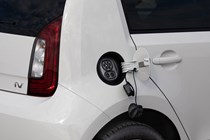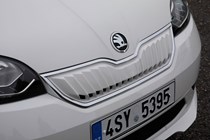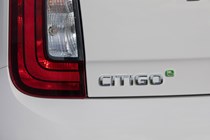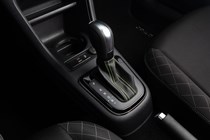
Skoda Citigo-e interior, tech and comfort
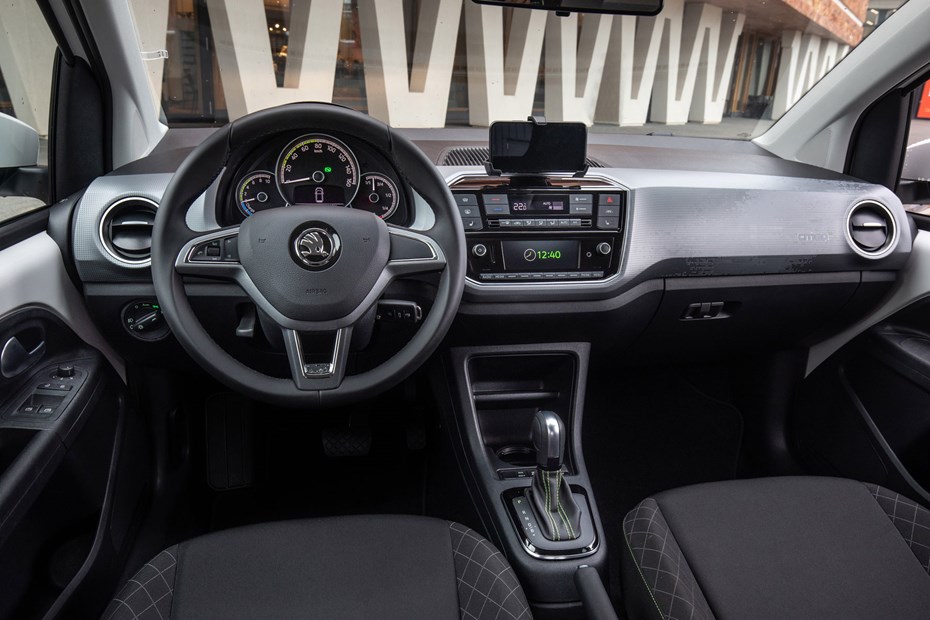
- Simple and usable interior layout
- Well-built and easy to get comfortable
- But some may find it a bit basic
There’s no radical departure from the regular Citigo once you jump inside this electric model, aside from some new graphics across the dash pad and a few small differences in dials and buttons. Whether you see that as a good or bad thing is entirely up to you to decide.

Where Renault went futuristic with the first Zoe (and upmarket with the second), Skoda has kept things simple and familiar with the Citigo.
Why this is good
Those who have been reluctant to dive into the world of electric cars could be forgiven for being put off by the futuristic nature of them. Jump behind the wheel of a Nissan Leaf and it’s all digital displays and unfamiliar-shaped controls, which could put off some buyers. You don’t get that problem in the Citigo – it’s virtually identical to a regular petrol-powered model save for some new decals across the dashboard and a few tweaks.
The main giveaway is a design across the dashpad that is designed to be in theme of eco-friendly modernism. In short, there are some different colours and shapes to make look futuristic and clean. The other giveaways are mainly in the dials. The analogue setup remains, but the fuel gauge is now a large battery reserve gauge, while the rev counter is now a gauge to show how your energy is being used. It’s all very easy to read and simple. Below this sits a small trip computer screen that reads READY when the car is switched on (via a traditional key), and you can scroll through different displays. Despite the simplicity, something just a little more up-to-date wouldn’t have gone amiss here. It’s black and white and a bit low-res.
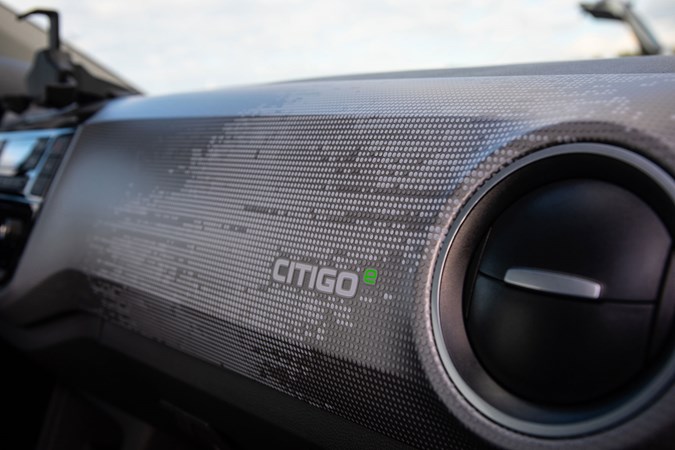
The only other area to give any hint of change is around the gearlever, with green stitching and a button ahead of it to switch between drive modes. There’s the normal mode the car starts in, as well as Eco and Eco+ plus modes aimed to eke out as much of the car’s electric range as possible.
Everything else remains familiar – a simple radio setup with a small colour screen and buttons to control it, with other functions controlled via your smartphone which docks on top of the dashboard. This is where Skoda’s selection of apps can also be used to control the car’s charging from anywhere you take the phone, as well as things like sat-nav and media.
Why this is bad
Some keen to make the jump to the future and electric power will be disappointed that it just seems like a regular Citigo inside. It doesn’t embrace the change, and some may feel a but letdown by this. But it’s certainly something that shouldn’t put you off. The Citigo is cheap, and keeping things simple and familiar inside is a result of this. The good thing is it doesn’t feel a cheap product. It feels a sensible product.
How comfortable is it?
- Seats are great in higher-spec cars
- Ride is composed around town as well
- Refinement is good but only at lower speeds
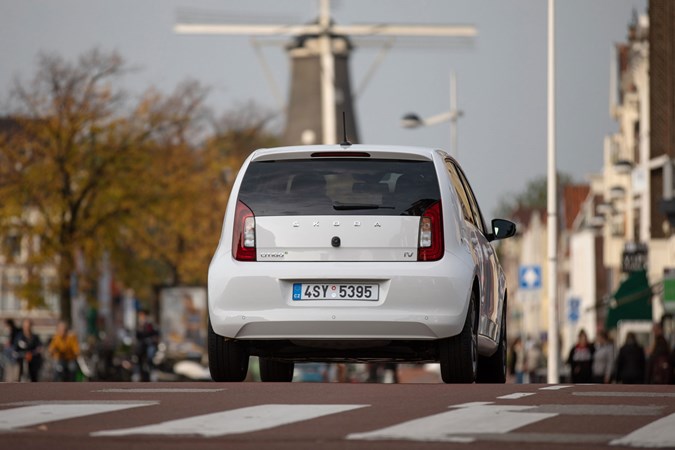
The Citigo was already one of the more comfortable and composed city cars to drive – whether that’s in town or out of it, and we’re pleased to report the switch to electric power hasn’t changed this.
The seats – at least on SE L models – are particularly comfortable with nicely shaped backrests and plenty of squidge in the base and bolsters. It’s very easy to get comfortable, and stay comfortable. You’ll need the higher-spec model to get a full range of adjustment on both front seats, though.
The ride is very composed too. Rough surfaces in town are dealt with very well – the car doesn’t become too upset by bad potholes, and section of wobbly cobbles was met by relative calm and composure. Nothing rattled, which is a good sign.
We haven’t yet driven the Citigo-e on faster motorway sections of road, so we haven’t been able to fully test how noisy things get at higher speeds, but the silence around town is very relaxing, and the lack of big wheels means you don’t get too much other noise making its way into the cabin.


